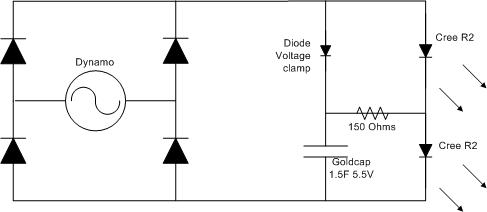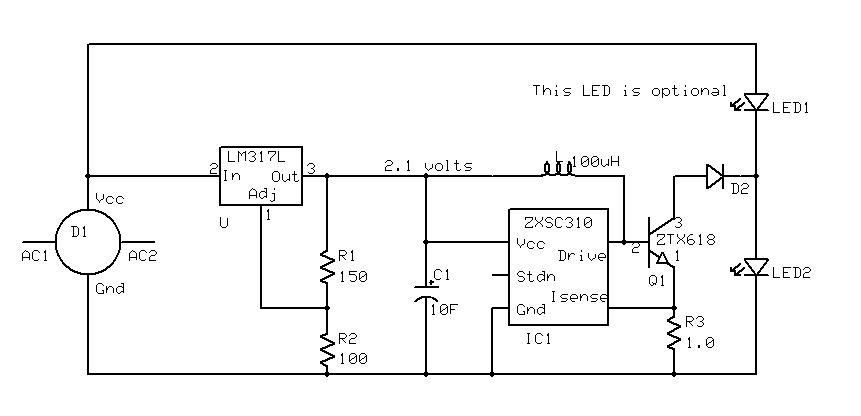Re: Will this circuit work?
I updated the original diagram with the LM317L circuit on flickr and replaced with a diagram with a warning about tolerances and the worse case possibility. I've updated the link in my original message here, but other messages (such as Alex's) will have broken images.
I also built up the circuit variation that frontranger suggested to improve the charge voltage of the supercap. After building it and taking some measurements, I was only seeing a little over 6v across both of the Cree R2's, and the diode clamp was dropping the charge voltage at the supercap to just over 4v.
It turned out that a single diode provided enough of a drop so that the supercap got just over 5v, and this is what I ended up with:
The standlight seemed decent for a "be seen" light and it lingered around for quite some time. But I think I'm going to pick up a 50 and 100 ohm resistors and see it looks with those - the second supercap may come in handy with the lower resistance.
I'm really glad that there was so much feedback on these circuits as well as getting a chance to prototype it - this current circuit seems much better than the original one that I wired up last night.





